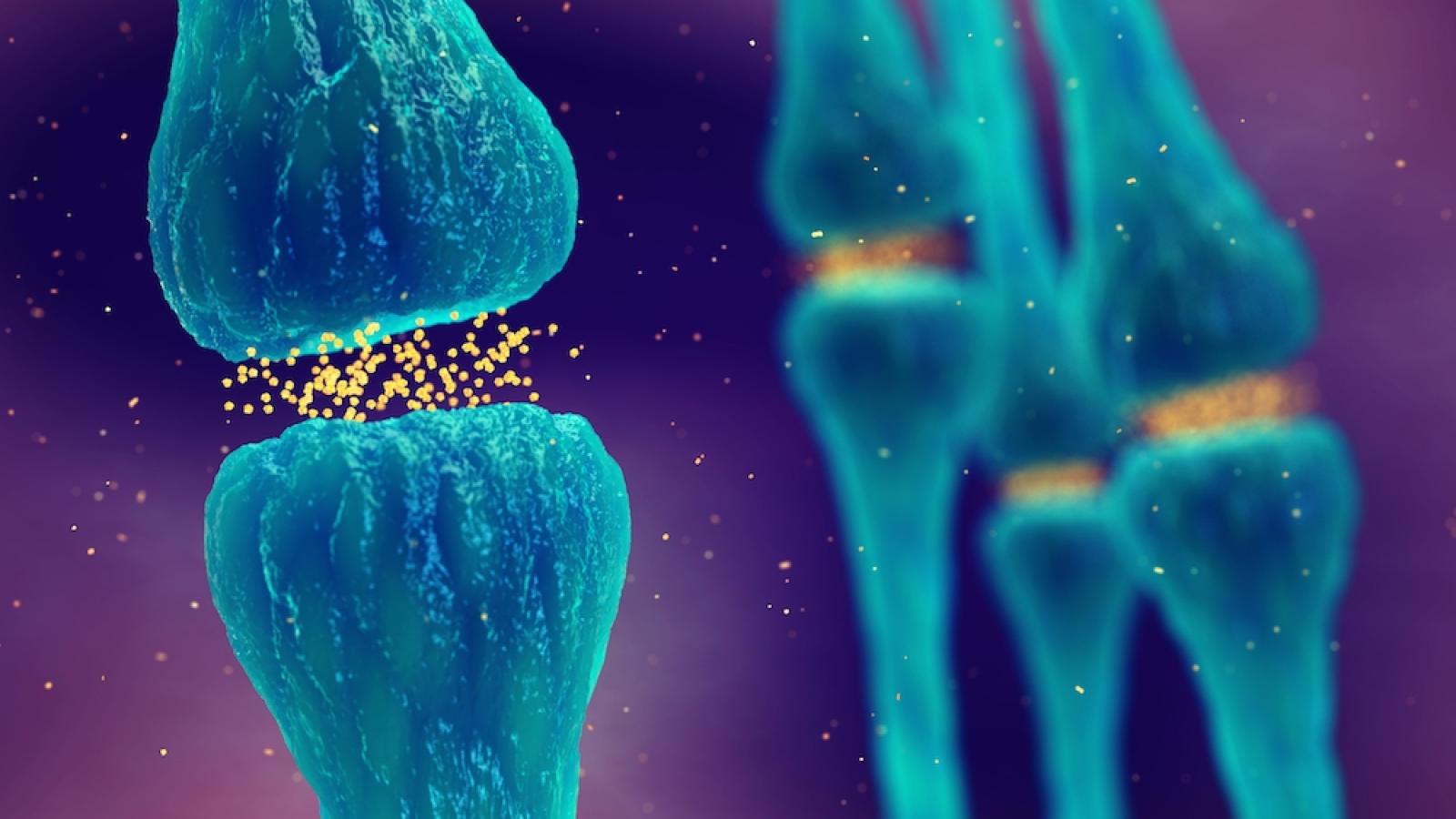A team of researchers led by Prof Kei Cho, Group Leader from UK DRI at King’s, has uncovered a new molecular mechanism behind the weakening of synapses and neuronal dysfunction in tauopathies. The findings, published in The Journal of Neuroscience, provide new insight into the cascade of pathological events initiated by harmful tau hyperphosphorylation, and point to possible new treatments for several neurodegenerative diseases.
Tauopathies is a collective term for neurodegenerative diseases that are characterised by abnormal hyperphosphorylation of the tau protein. This modification of the protein leads to changes in its molecular structure to form neurofibrillary tangles, a major pathological hallmark in this collection of diseases. Tau hyperphosphorylation is also thought to cause dysfunction and loss of synapses, cell structures that connect neurons together, leading to cognitive decline. However, little is understood about the disease pathways involved.
Prof Cho’s group hypothesised that abnormal hyperphosphorylation of the tau protein blocks vital interactions with other proteins in the cell such as PACSIN1 (Protein kinase C and casein kinase substrate in neurons protein 1). Using modified proteins on mouse brain slices, the team investigated the effect of different tau phosphorylation on the interaction between tau and PACSIN1. They found that the hyperphosphorylation at the site serine 396/404, observed in the early stages of Alzheimer’s disease, has the biggest effect in disrupting the interaction.
Next the team investigated whether this disrupted tau-PACSIN1 interaction had any effect on the function of synapses. They observed that there was reduced signalling via a key synaptic amino acid receptor, AMPA. This demonstrates that hyperphosphorylation of tau initiated a cascade of events that leads to synapse weakening through a blocked interaction with PACSIN1.
Additionally, removing either tau or PACSIN1 causes an increase in AMPA signalling in regions of the cell responsible for organising receptors within the neurons, a major mechanism to dynamically regulate synaptic strength. This confirms the important roles of both proteins in AMPA receptor trafficking, and overall synaptic function.
Altogether, these results, for the first time, support a causal relationship between tau phosphorylation and synapse weakening mediated by AMPA receptor regulation via tau-PACSIN1 binding. This discovery provides important understanding on the signalling mechanism underlying changes in synaptic function during neuronal development, and in neurodegeneration.
Study lead and UK DRI Group Leader at King’s, Prof Kei Cho, said
“The majority of tauopathy research has focused on misfolding, mislocalisation and aberrant hyperphosphorylation of tau but less is known regarding the role of tau in synapse function. These new findings illustrate that the tau-PACSIN1 interaction is essential for synapse function and its dysregulation may bring a potential pathophysiology in the progression of Alzheimer’s disease”.
The team now plan to investigate this interplay between tau and PACSIN1 further and whether this occurs during the early stages of tauopathies, when therapeutic intervention may be most effective. They will also extend their studies to include aged brain samples to better represent the neurodegeneration taking place in the tauopathies.
Reference
Regulation of synapse weakening through interactions of the microtubule associated protein tau with PACSIN1. Philip Regan, Scott J Mitchell, Seung-Chan Kim, Younbok Lee, Jee Hyun Yi, Saviana A. Barbati, Christopher Shaw, Kwangwook Cho. Journal of Neuroscience 21 July 2021, JN-RM-3129-20; DOI: 10.1523/JNEUROSCI.3129-20.2021
Article written by Annora Thoeng from UK DRI at KCL
Article published: 02 August 2021
Banner image: nobeastsofierce/Shutterstock.com
neurodegenerative diseases are classed as tauopathies
